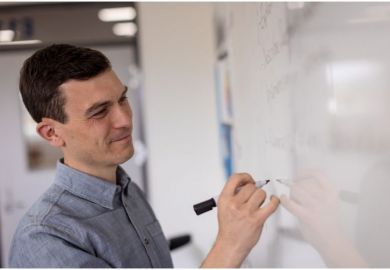A most endearing legacy of Irish popular culture is the Yarn: a Guinness-inspired entertainment, untroubled by factual verification in its enthusiasm for audience. Unstoppable Brilliance invites itself to join this genre. The book presents biographies of nine outstanding individuals, grouped by profession: Irish patriot politicians - Robert Emmet (inventor), Padraig Pearse (schoolteacher) and Eamon de Valera (statesman); scientists - Robert Boyle (English physicist), William Hamilton (mathematician) and Daisy Bates (Australian anthropologist); and literati - W. B. Yeats, James Joyce and Samuel Beckett.
The introduction provides a brief summary of autism spectrum disorders (ASD) and Asperger's syndrome (AS), a relatively mild instantiation of ASD usually accompanied by high-level cognitive abilities. A table lists more than 150 traits that the authors suggest are characteristic of AS, including a genetic predisposition to religious sensitivities. The chapters extend such inclusiveness even more generously to include, among many things: blue eyes; dark eyes; youthful androgynous complexion; craggy appearance; sporting talent; lack of sporting talent; innate sense of justice; low social awareness; preferring the company of children and animals; forming close friendships with adults; punctuality; tardiness; an affinity for learning Irish; an inability to learn Irish; and using a walking cane (or not), depending on the chapter.
The authors' thesis is that the biological basis for genius is AS, their case studies being both sufferers and beneficiaries. The difficulty with any such claim is that geniuses, by definition (and ignoring the unwarranted hyperbole of football commentators), comprise a very small set (with Irish geniuses an even smaller set), in which individual differences far outweigh similarities. What precisely had Newton, Mozart and Einstein in common? Although we can acknowledge paradigm-shifting, prodigious, highly creative achievement, especially with the benefit of hindsight, drawing a "genius" line is a difficult, if not pointless, exercise. Here the nine protagonists are declared to be geniuses, and that's that.
The central issue is whether AS is a necessary and enabling characteristic of genius. Certainly, there are many traits of the case studies that are in common with those conventionally associated with AS, and if it quacks like a duck, and waddles like a duck... But on the other hand, how else can someone make creative leaps in mathematics or theoretical physics without spending a good deal of time engaged in concentrated thinking, to the exclusion of "competing" social distractions? This is the dilemma: when is it useful to pathologise the normal behaviour of non-normal people - in this case, highly intelligent people - when that behaviour is non-normal for normal people?
However, this is not such a dilemma here because every idiosyncratic behaviour is counted as indicative of AS, especially when the behaviours seem inconsistent. De Valera was "mad or genius", or both. Joyce was "charming and cruel, aloof and affable, secretive and open, imperious and childlike, bohemian and prudish, strong and fragile, restrained and reckless" - all of which "can be understood through the prism of Asperger's syndrome". Boyle had severe sensory impairments yet was a keen observer of nature; while travelling he never had his head out of a book yet he took in all of his surroundings; he had no time for socialising yet had charming social manners and conversation. Bates also was shy and reserved, yet she never rejected an invitation to lecture, open a fete or award prizes at a school speech day; she had a remarkable sense of fashion yet always wore Edwardian clothing unchanged from her youth. Although she never exposed any of her skin to the harsh Australian sun by wearing gloves, she suffered from badly sunburnt hands.
These contradictions arise from the exclusive use of secondary sources; this book is a review of earlier biographies - which disagree, as biographies will. Rather than choose, Antoinette Walker and Michael Fitzgerald include everything as indicative of AS, even when there is good evidence that the characteristic, such as high moral purpose, is associated with high intelligence (obvious exceptions not withstanding) independent of any concomitant pathology. Without recourse to primary sources to resolve these disagreements, with no references, no footnotes and no index, it is difficult to imagine who the authors' intended audience might be: Irish iconoclasts?
Such an uncritical approach to diverse accounts engenders incredulity. For the adolescent Boyle, "exposure to Galileo's works and tomb produced a fresh round of daydreaming on the structure of the universe", while Joyce daydreamed "but not to the extent of Yeats, Pearse and Boyle". The invention of the retrospective DayDreamometer will be welcome news to J. K.
Rowling and Philip Pullman. The East-West railway, completed in 1907, "ran from Brisbane to Sydney", which, as a glance at a map of Australia shows, is north-south and several thousand miles across that continent from Bates's camp at Ooldea. "A pressure cooker works on Boyle's law" of the inverse relationship between pressure and volume. A shrinking pressure cooker: perfect for a leprechauns' kitchen?
And even taking a central characteristic of AS - fixation on detail to the exclusion of the big picture - the cases here seem to argue for their exclusion. Boyle on the atomic structure of matter? Bates on the fate of the Australian Aboriginal race? Emmett and de Valera on Irish independence? Beckett on existence? Hardly small stuff. Actually, the most intriguing commonality of the majority of these studies is, like Newton, their being in effect orphaned in childhood. But Freud was not an Irishman.
John Geake is professor of education, Westminster Institute, Oxford Brookes University.
Unstoppable Brilliance: Irish Geniuses and Asperger's Syndrome
Author - Antoinette Walker and Michael Fitzgerald
Publisher - Liberties Press
Pages - 336
Price - £18.99
ISBN - 0 905483 03 1
Register to continue
Why register?
- Registration is free and only takes a moment
- Once registered, you can read 3 articles a month
- Sign up for our newsletter
Subscribe
Or subscribe for unlimited access to:
- Unlimited access to news, views, insights & reviews
- Digital editions
- Digital access to THE’s university and college rankings analysis
Already registered or a current subscriber?



